Homesteading is all about breaking away from a lot of conventional norms, yet even within the homesteading community, we have a lot of preconceived notions about what homesteading should look like.
Jill Winger is someone who defies convention. As both a homesteader and a serial entrepreneur, she is constantly juggling the demands of running multiple fast-paced businesses while also embracing the old-fashioned skills and values of a simpler time. And yet, her unbridled ambitions, coupled with her systematic approach to both homesteading and business, have allowed her to accomplish things that many only dare to dream about, and enabled her prairie homestead to thrive in one of the harshest climates in the United States.
Jill and her husband Christian both grew up in suburban neighborhoods, far from anything resembling a homestead. But Jill’s affinity for horses eventually led her to the college arena where she met Christian, and then onto a 67-acre property in rural Wyoming where they now raise cattle, grow a large vegetable garden, and produce much of their own food.
While the couple had no intentions of homesteading and knew nothing about food production when they first started out, they had what Jill calls a “supernatural inkling” to make the land productive.
“We needed to make this mean something besides just a house to live in. We started asking ‘What does it mean to make this land productive?’ Well, we could put a compost pile in and use our horse manure. We could plant a garden and grow some food… I was intrigued by the idea of food production, but I also liked the idea of saving money because we were young and we had a mortgage,” said Jill in a recent interview with Homestead Living.
“Fast forward to today: we now have a full-fledged homestead on that same property, and it’s really expanded into a lot of other ventures. That has taught us a lot about ourselves and the land. Homesteading has really brought everything good into our life.”
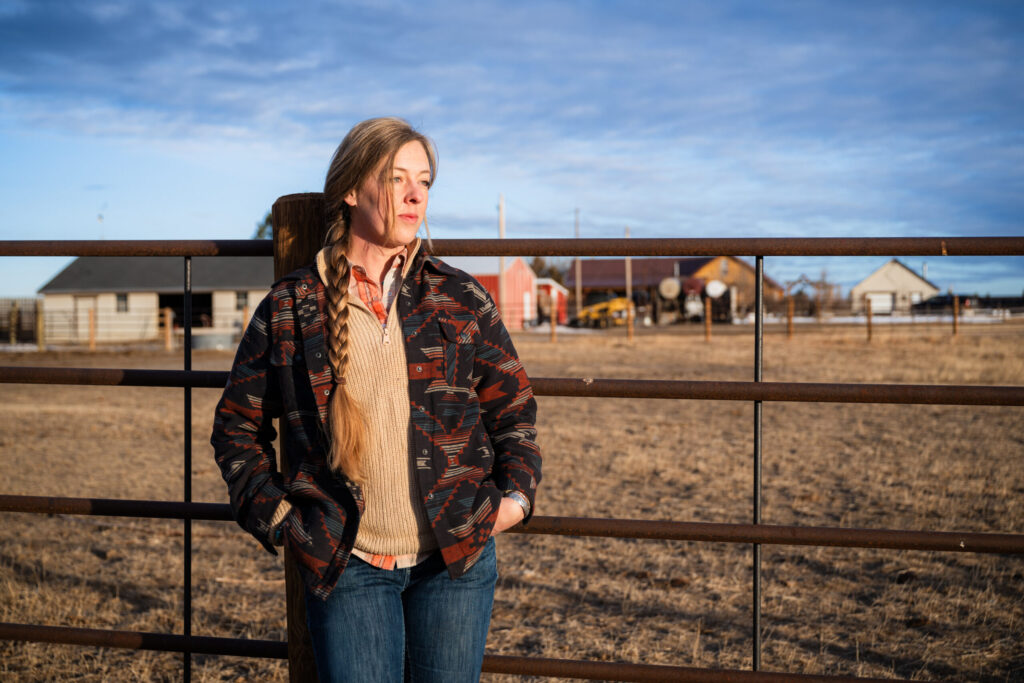
Learning to Embrace Your Seasons
Jill’s version of homesteading isn’t exactly the slow-living, bucolic vision that draws many people in. With multiple projects and business ventures on the go at any given time, she’s had to learn how to balance her many passions at once without burning out. “I’ve talked to a lot of folks who are going into homesteading and thinking, ‘I just want to be in the kitchen all day. I just want to be in a garden. I just want to be focused on this one thing.’ Maybe that works out for some folks, but my brain moves really fast, so I tend to have more irons in the fire,” said Jill.
“I love the food production and the cooking aspects of homesteading. I love being outside. But I also have multiple businesses—I’m creating content, I’m teaching other people, and so depending on the season and on my calendar, my time can fluctuate greatly between business and homestead, and between farming and traveling. There’s a lot that is very unexpected that we have to deal with.
“I certainly go through seasons. I would say, in the May to June timeframe, the only thing I want to do is be in the garden, be in the soil, or be on horseback; I don’t want to do anything else. I don’t want to be in my office. Later on, during the winter, I do have some things in the greenhouse, but I’m just not that interested in the greenhouse right now. It’s not lighting me up. Instead, I’m really excited about creating in the office and in the studio. I want to write. I’m feeling this urge to really dig in creatively.
“I think what brings me joy really flows and changes, and I try to respect that. I feel like nature teaches us that every season looks different, so I try to respect those seasons in my life and in my business too,” she explained.
Balancing Old-Fashioned Values with Modern Day Challenges
While there are parts of Jill’s story that may not be one hundred percent relatable to all who follow her, she definitely speaks to the core values of many a modern homesteader: The values of knowing where your food comes from and how it was raised, striving to be a producer rather than merely a consumer, and being fiercely independent in a world that encourages us to be anything but.
It’s no wonder that Jill’s most recent book, Old-Fashioned On Purpose, resonated with so many people. In it, she highlights the importance of preserving old-fashioned skills and attitudes like learning to grow your own food, cook like great-grandma and work with your hands. She said she’s had a very positive response from readers.
“[The book] has gone really well. I’m getting a lot of people saying, ‘This came at just the right time! I feel like you were speaking to me!’ And that was my goal—I wanted it to be an encouragement to those who are already feeling those urges. My broader goal that I’m still working on is to get it outside of the homesteading audience to people who don’t yet know what homesteading is.”
The book begins with Jill sharing her story of the struggles she and Christian faced when they first bought their property. From the “squatty nine-hundred-square-foot shack covered in yellow plastic siding,” to the washing machine full of moldy clothes they found in the front yard, to “broken fence lines as far as the eye could see,” the couple had their work cut out for them from the time they set foot on their new property.
“I think our initial struggles are very relevant to a lot of folks today who are getting into this lifestyle for the first time. So often, we think there’s never enough time and never enough money, and I can totally relate to that,” said Jill.
“When we first started out, my husband and I were still working full-time jobs. I was a Vet Tech and [he] was an electrician, so we were gone Monday through Friday. We had this massive project list, and we’d have maybe half a day on Saturday and half a day on Sunday to tackle this huge list. I can remember that feeling of ripping off our work clothes when we got home and just getting outside as fast as we could and doing as much as we could until dark, and it was fun!
“I loved it on one hand, but that feeling of never getting caught up was overwhelming. Plus, when we started out we had to budget, so we would have to count how many fence posts we could afford and decide which buildings we could fix or put in; there was always that tension.
“Our life has changed quite a bit since then: We don’t work outside the home anymore; we’re entrepreneurs. Our budget has changed, so now my biggest struggle is pruning my life so that things don’t grow out of control. I’m not saying yes to very much these days, which is really hard because I have a lot of cool opportunities in my life! But I’m always weeding and pruning. That’s my biggest ongoing struggle,” Jill admitted.
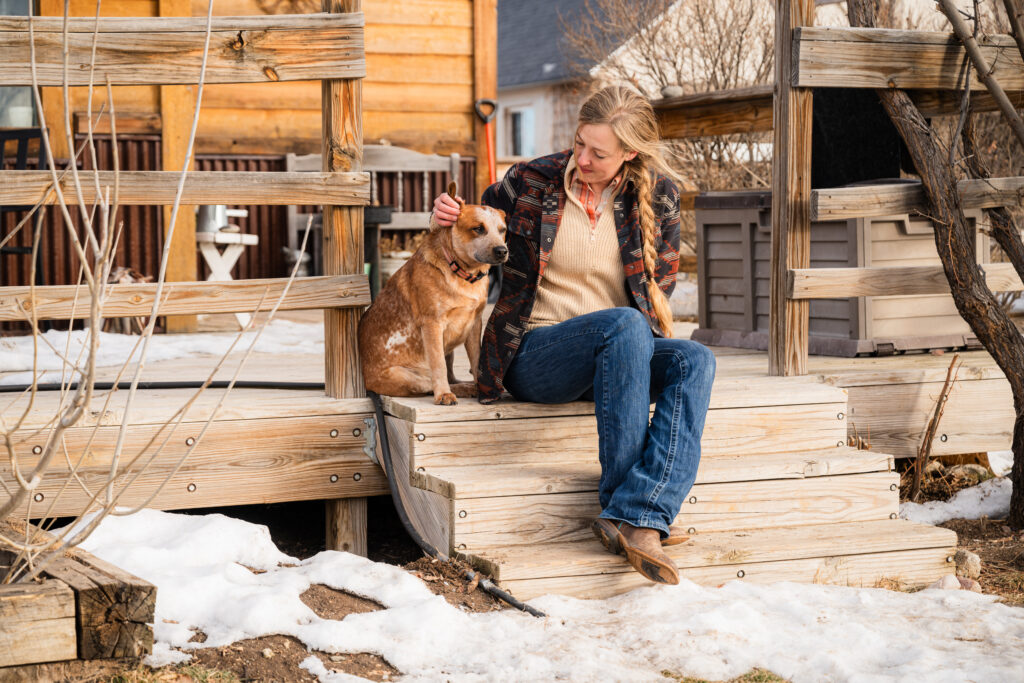
Advice for New Homesteaders
When asked what advice she would give to someone who’s new to homesteading and just starting out, Jill said that putting systems in place that help to simplify or automate certain tasks has been key to her success.
“I’m a big ‘systems’ person,” said Jill. “People always ask, ‘How do you do it all?’ and I always tell them that we got one piece running at a time—to the point where it could operate in the background—before moving on to the next project. Take the garden for example: I have a pretty big garden in a greenhouse, but we have watering systems in place, and every summer I mulch and do my chores in a certain way so that I only need to be out there for 10 or 15 minutes. We didn’t have our garden systematized all at once, right when we started; we built it one step at a time. But establishing those systems over time is absolutely crucial.
“My advice to others is to think carefully and define your objective. Do you need to make money from your property? Do you need and want to feel more peace? Have a plan so that whatever your number one objective is, you solve for that first. Focus on that project and dial that in to get the result you’re looking for. Then, and only then, move on to the next thing.
“Aside from that, if I had to give one piece of advice to someone who’s just starting out, I’d actually recommend not consuming any homestead content for a while, which is funny for me to say because I make a living from people consuming my content. But if it’s making you feel anxious or like you’re too far behind, take a break! You know what path you’re supposed to be on: your gut will tell you; your intuition will tell you,” said Jill.
Managing Stress and Burnout
While Jill can often be found juggling multiple projects at once, she’s still only human like the rest of us, and is prone to burnout too if she’s not careful. Fortunately, this is also something she’s learned to manage over the years.
“Most of my seasons of burnout come with too many outside tasks or responsibilities. I often try to mix these other responsibilities into the homestead which sucks the joy out of everything. There are a couple ways that I currently handle this: First off, I say no to things, even if they’re good things.
“Second, while I don’t generally feel burned out from homesteading work, there are seasons to that work. Like right now, I’m not milking the cow—we have a calf on the cow currently. I just came out of my book launch and I’m having a really intense year, so I’m glad I didn’t need to go out and milk her once or twice a day and then handle all of the milk and meat and cheese too. I’ve learned to give myself grace and remind myself, ‘You can still be a homesteader and not milk the cow. It’s okay!’
“I think it’s important to be honest with yourself and say, ‘Maybe I don’t cook from scratch every single night this week because we have a crazy week, so we’re going to get pizza or maybe we’re going to use a convenience item.’ It’s okay, and we won’t die! Having balance is going to give you the ability to homestead longer with more enthusiasm than holding yourself to unrealistic expectations all the time.”
Jill also stressed the importance of taking time to rest, which can be difficult when it feels like the list of projects to tackle and skills to learn is never-ending. But scheduling in time for rest can also be a game-changer when it comes to avoiding burnout and keeping your passion for homesteading alive.
“I just got back from a three-day horsemanship clinic. It was beautiful and I forgot everything about my life at home because I was completely immersed in the clinic,” said Jill. “I didn’t look at my phone; I didn’t think about the homestead; I didn’t think about the businesses. As counterintuitive as that may sound to someone because I have a lot of things to manage, I have to do that to be able to come back with power and passion. We need time to rest.”

Leaning Into Discomfort
Another thing Jill credits for her success is her willingness to lean into discomfort, which she said has helped to make her more resilient and better equipped to handle the more difficult situations that inevitably come her way. Whether she’s battling blizzards and prairie windstorms or diving headfirst into new projects that push her past her comfort zone, Jill said that she’s “learned to rewire that part of [her] brain over the years to where [she] instinctually seeks slightly uncomfortable things.”
“People always ask me if I would move to a warmer climate if given the choice, and in all honesty, I wouldn’t. I actually like the challenge and the adventure of the wind and the cold. I like the untamed nature of living in a place with harshness: I think it builds resilience,” said Jill.
“Another way that we can build resilience is by continually putting ourselves in situations that are just outside of our comfort zone. That’s not a natural state for humans to be in—we’re always going to seek comfort; we’re going to listen to that part of our brain that’s trying to keep us safe.
“What I’ve found is that the more situations I put myself in that are uncomfortable and challenging—and come through them on the other side—the more I grow. Even if I get a little beat up in the process, that just builds my confidence and my resilience. I’ve developed an inner sense of knowing ‘I have what it takes. I can handle this. And if I can handle this, then I’m more confident I can handle that,’” explained Jill.
Balance is Overrated
With so much on the go, finding balance hasn’t always been easy for Jill. Instead, she said she prefers to go with the flow of lean into the different seasons of her life.
“I think balance is a tricky word. I think when we say balance sometimes people expect an exact percentage of family time and an exact percentage of work time every day, 365 days a year. I don’t have that. I have seasons when I’m working a lot on one project, like when I was writing this latest book. I would say my life was unbalanced. I spent the majority of my time in this office. I didn’t do a lot of social things. I didn’t ride my horses very much. I was mostly in work mode. And now that the book is launched, I’m kind of in between projects,” said Jill.
“During the winter—November, December, and part of January—I committed to resting. I still kept some things going on behind the scenes, but no big projects and no major launches. I feel like I’ve gotten a lot better over the years at recognizing my need for rest and listening to my body when I’m tired. I used to just push, push, push, and then I would just wake up one day and be crying and think, ‘Why do I hate my life and my husband?’ But really, I didn’t hate my life or my husband, I was just burnt out and needed a break.
“Sure enough, when I’d take a week off my energy and desire would come back. Now I intentionally try to build margin: I try not to work weekends—although there are exceptions—and I don’t work in the evenings unless I’m just on fire with a project. Horses are one way that I’ve learned to really unplug, so I’ve been weaving that into my year more and more.”
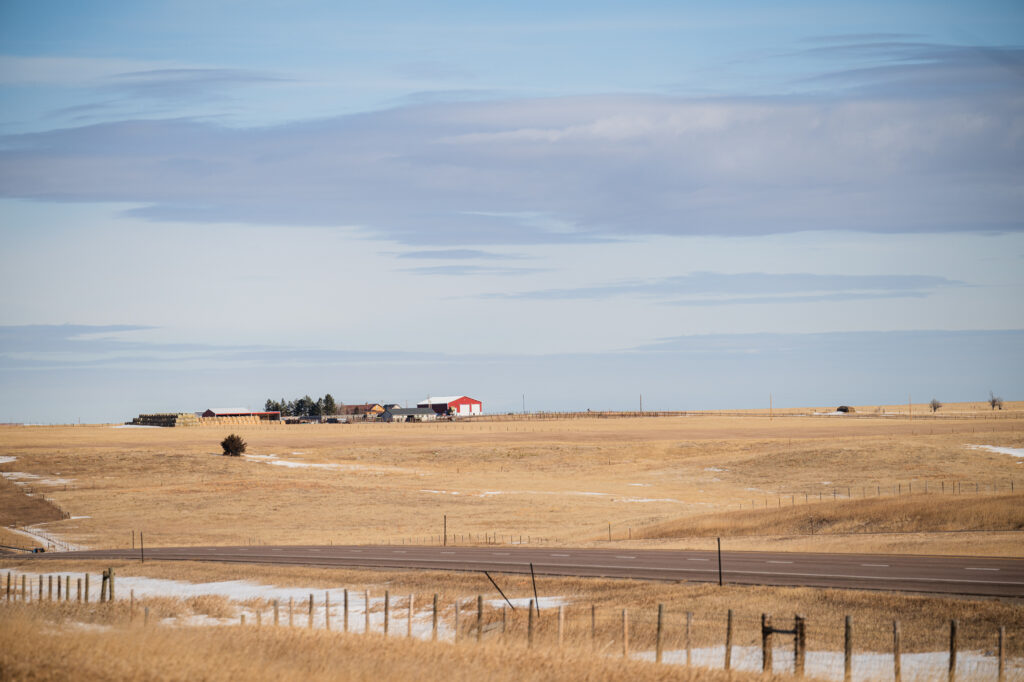
Prioritizing What’s Most Important
When asked what advice she has for others who are experiencing burnout or feeling like they’re lacking balance in their life, Jill said the most important thing is to get really clear on what you’re doing and why you’re doing it.
“Sometimes I have people do an exercise where they write down everything they’re doing on one side of a piece of paper and on the other side they write down the results that they’re trying to achieve. Then I have them draw a line from everything they’re doing in a day or a week or a month to the results. If there’s not a lot of correlation, it’s a good sign that they might need to cut some stuff out,” said Jill.
“It’s so easy to do things out of obligation, or out of a people-pleasing mentality. Sometimes I say yes, but then I get grouchy about what I agreed to. Sometimes we just need to cowboy up and say no to some stuff. And then when you’ve done that, you’re down to the things that you love and that you’re passionate about. You’re left with things you want and need to have in your life.
Then, determine an objective out there for your day or your week, and once you’ve accomplished that, shut it down. And make sure you’re getting outside! Get your hands in the soil; take a walk; work out; spend time with your family. It’s counterintuitive for those of us whose personalities are a little more ‘Type A,’ but I promise you’ll get more done, you’ll feel better, and you’ll be more productive after taking a break.
“When I spend time in the garden or when I spend time with the horses and the cows—I think this is when the homestead weaves into high production life so beautifully, because these tasks give us tangible ways and reasons to get off the computer. I used to see weeding as a chore, but now I see it as a chance to unplug and unwind.”
Wise advice from a seasoned homesteader who clearly knows a thing or two about managing the complexities of modern homesteading in a fast-paced world—Jill Winger stands as a testament to what’s possible when you allow yourself to dream big but stay disciplined enough to set your priorities, establish your boundaries, and take one small but strategic step at a time toward your goals.
Above all, Jill’s journey is a good reminder that you are most likely capable of more than you might think, and with a little determination, a willingness to push yourself outside of your comfort zone, and an understanding that it’s okay for “homesteading” to look a little different for everyone, there are no limits to what you can accomplish.
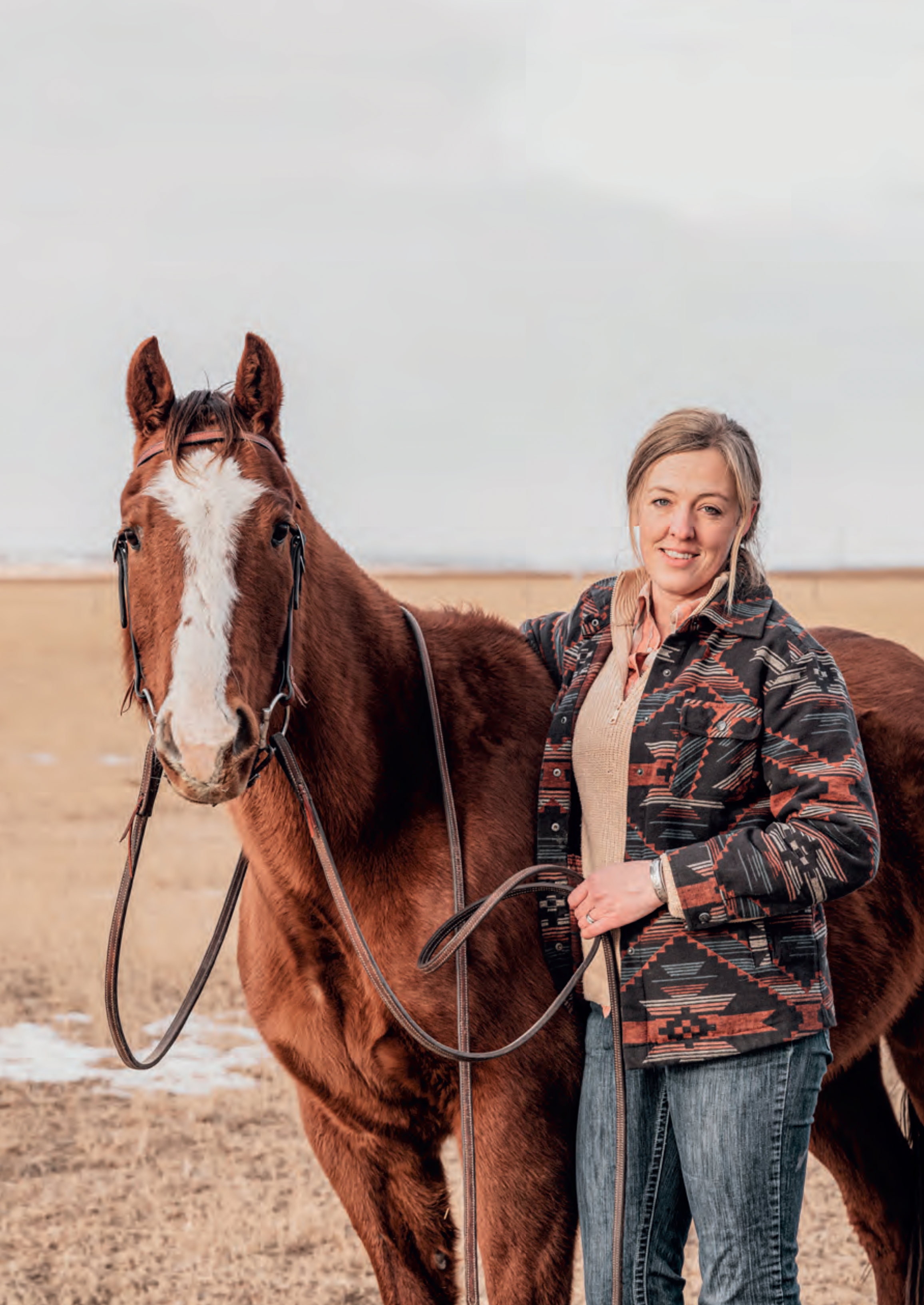

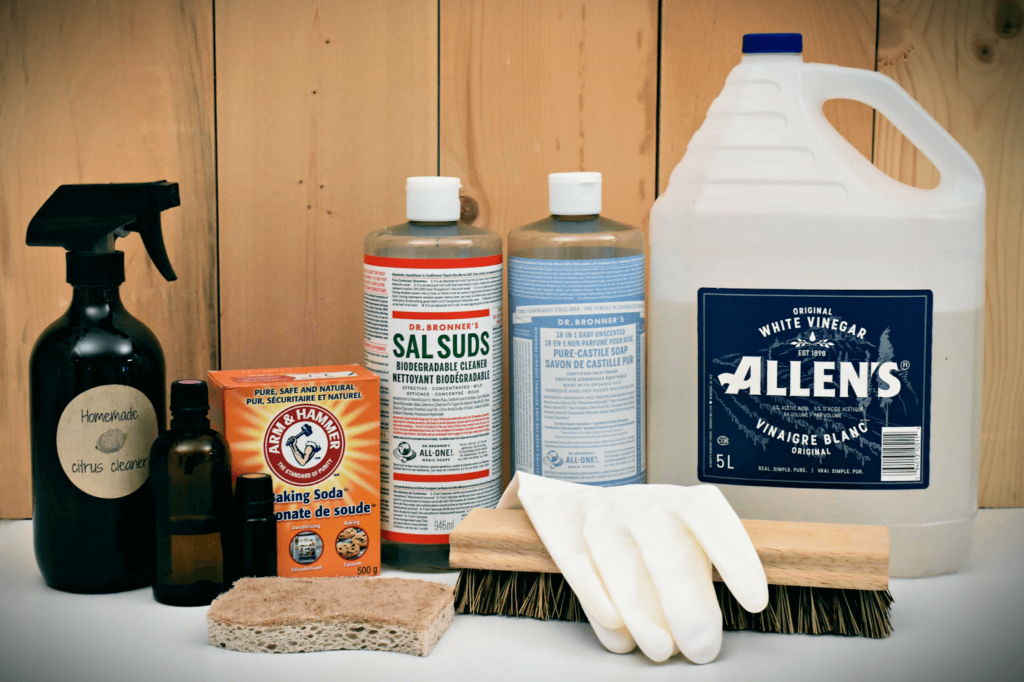

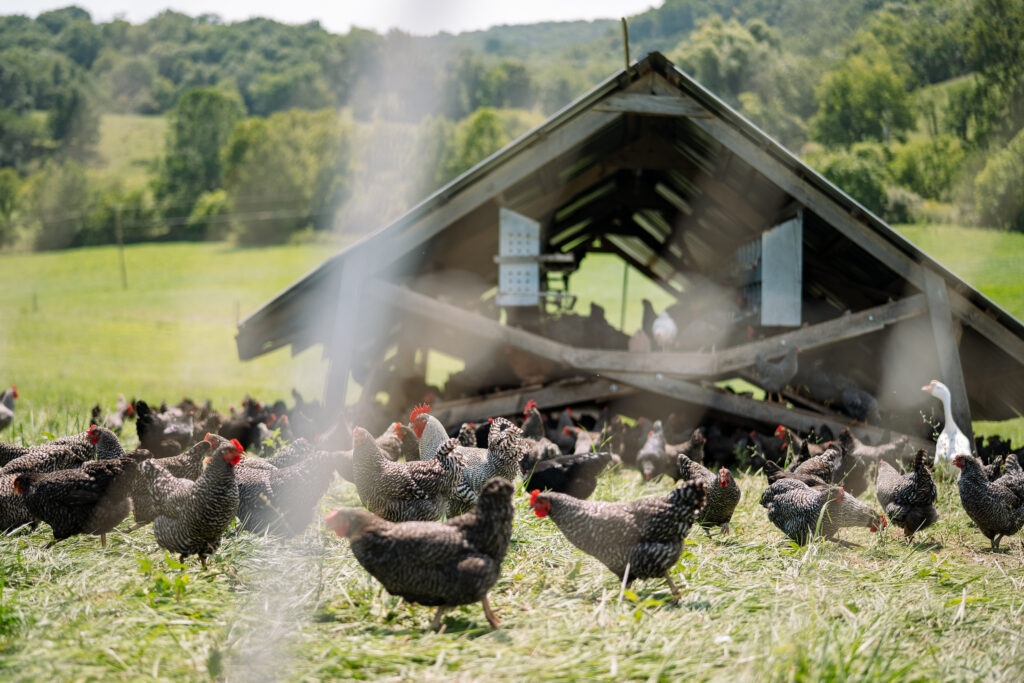
Leave a Reply